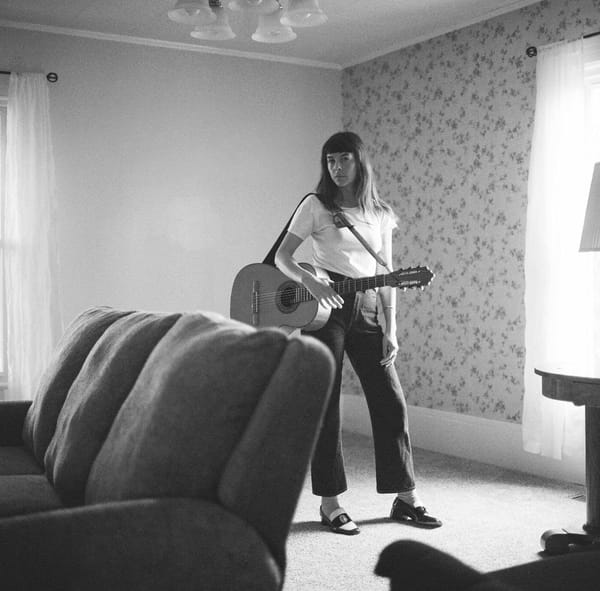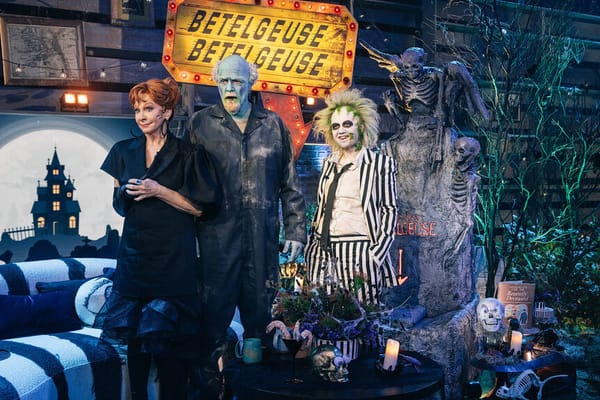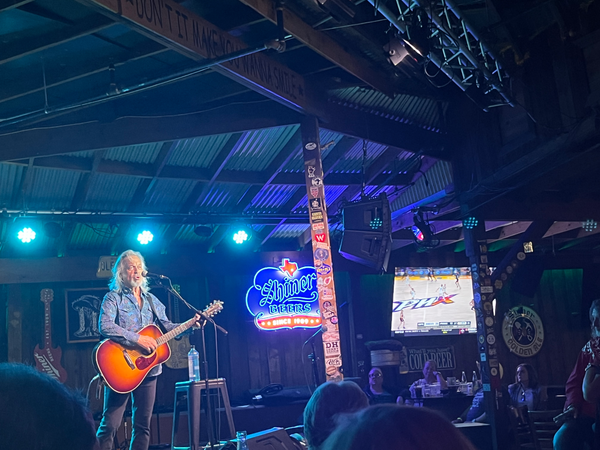Issue #96: This Week In Country Chart History — Crossover, Horny Songs and the Gruesome 'Murder On Music Row'
We're high on 1975, and low on 2000....
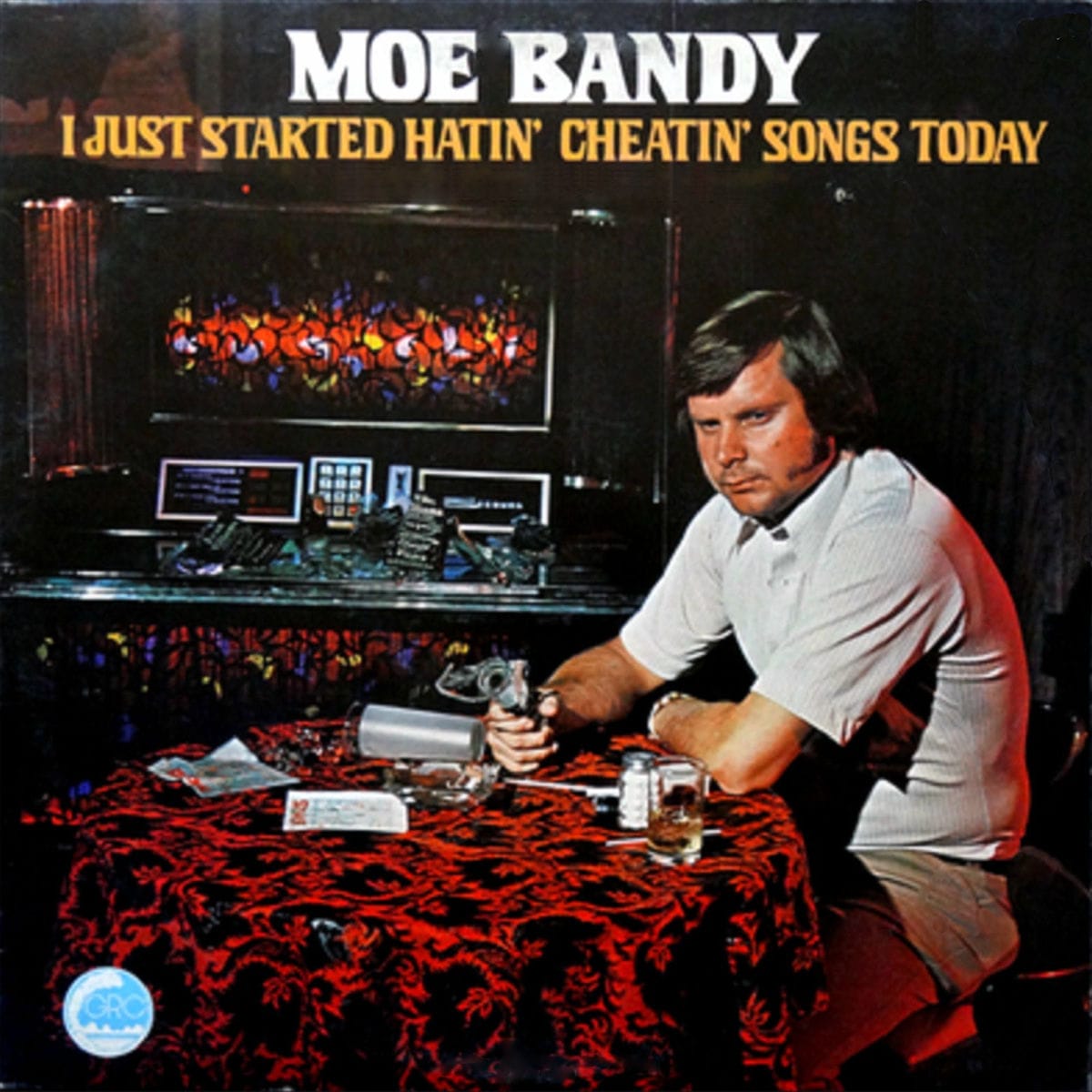
Back with more arcane country chart history, because as we all know it brings me great joy :) Hop in, let’s take a ride on the Billboard time machine…
75 Years Ago: April 22, 1950
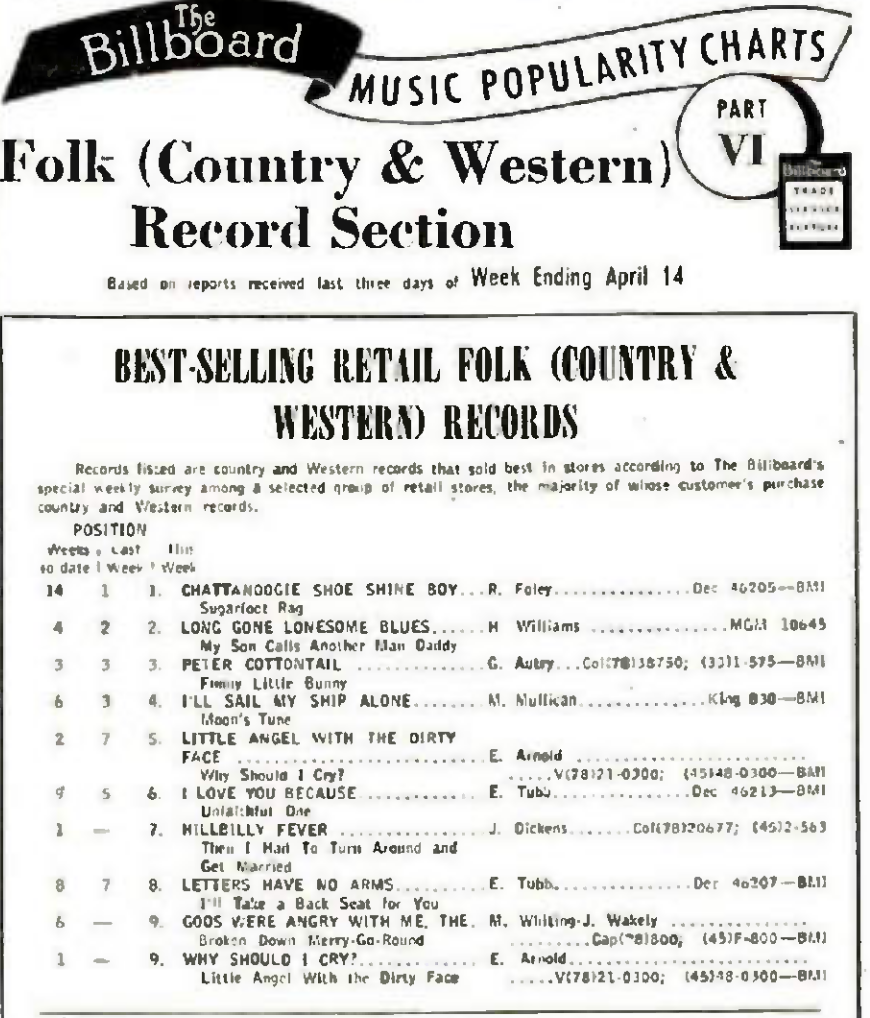
No, we still have not fully escaped the country chart tyranny of Eddy Arnold (not even sure where to begin with “Little Angel With The Dirty Face”), but there are other wild and notable things happening on this chart. The No. 1 song, Red Foley’s “Chattanoogie Shoe Shine Boy,” stayed in that spot for three months and was covered by just about anyone and everyone across genres — it is, as we say in the biz, a rich text.
It was written by Fred Rose and apparently given to two other Nashville power players for reasons unknown, just under a decade after “Chattanooga Choo Choo” mania. Instead of swing, “Chattanoogie Shoe Shine Boy” taps another historically Black style: boogie-woogie, which had major influence on both jazz styles of the moment and rapidly developing R&B and rock sounds. It doesn’t have any explicit slurs, but I think we can be reasonably confident that the song’s lyrics are a racist caricature — a somewhat headspinning juxtaposition with Foley, a white artist, using both Black musical innovation and very traditional Black sounds (the body percussion backing this song, often called hambone) for his own gain.
He was not the first; the “hillbilly boogie” sound, as well as of course Western swing (both of which would shape what we now know as rockabilly), had been circulating for quite a few years by the time he released “Chattanoogie Shoe Shine Boy.” Foley, though, had perhaps the most successful iteration of the subgenre with this hit, and it became his signature song. It’s one more example of the maxim we always come back to over here: there’s no such thing as “real” country, nothing to save — just an array of sounds and styles that have all kinds of divergent roots, and artists who bend and weave around the conceit of a central tradition just as often as they practice orthodoxy to it. (The B-side, Hank Garland’s iconic “Sugarfoot Rag,” is just one more example of how jazz and country and everything else is impossible to separate). (Shout out to Emily Hilliard of Spinster Sounds/The Female Bob Dylan fame and the McKie's Disc Jockey Show Lounge account for giving me Bluesky lessons on this history!)
I already wrote too much, what else is new; must point out “Hillbilly Fever” and its “Big Apple beat.” You know the yodeler’s dream “Long Gone Lonesome Blues,” but did you know about the seasonal hit “Peter Cottontail”?? Yes, we used to have Easter carols…blame Bing Crosby (I’m trudging through part one of the Giddens bio now, so I have Bing on the brain).
50 Years Ago: April 19, 1975
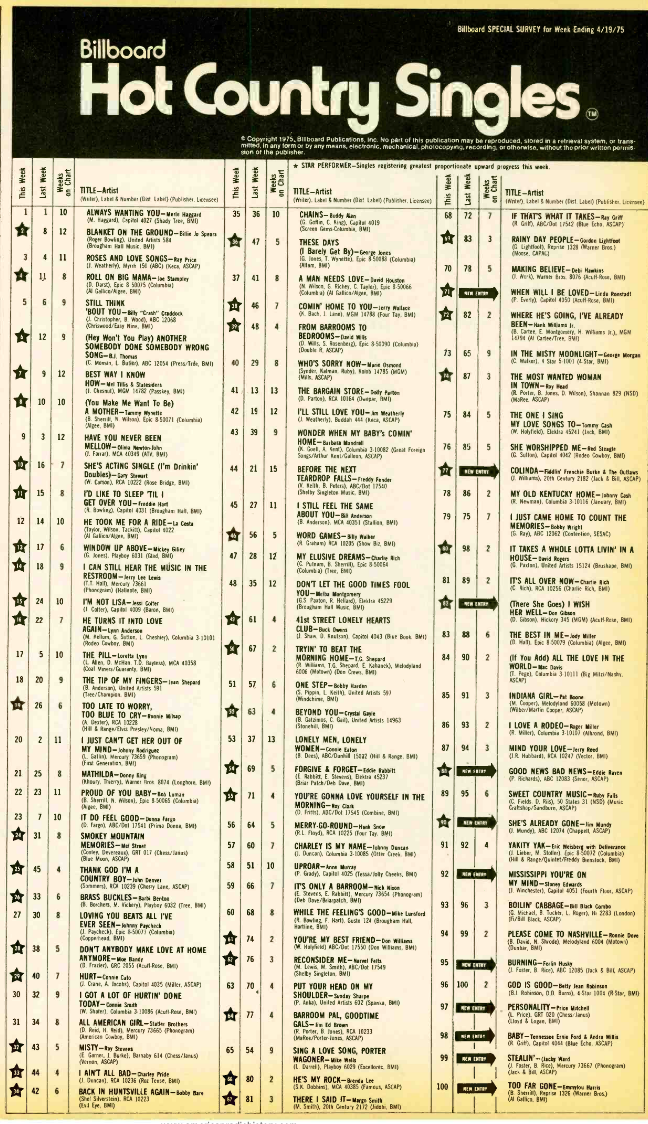
We have some real classics here: “Before the Next Teardrop Falls” by Freddy Fender, “The Pill” by Loretta Lynn, “I’m Not Lisa” by Jessi Colter, “She’s Acting Single (I’m Drinking Doubles)” by Gary Stewart, “Thank God I’m A Country Boy,” “(Hey Won’t You Play) Another Somebody Done Somebody Wrong Song”….phew. I’m gonna be totally honest and admit that I did not know Linda Ronstadt’s “When Will I Be Loved” was on the country charts! The ’70s…were just different.
I’m going to use this post as an opportunity to share one of the more random things I've come across recently: a 1974 Village Voice (??) article that calls Moe Bandy the “Jesus Christ of C&W,” which I learned about after finding a copy of the Moe Bandy album that appears on this chart via “Don't Anyone Make Love at Home Anymore” (lol) signed in lip liner. Anyway: Moe Bandy, messiah. Now you know. You can find a more recent homage from friend of the newsletter Nick Murray over in Rolling Stone.
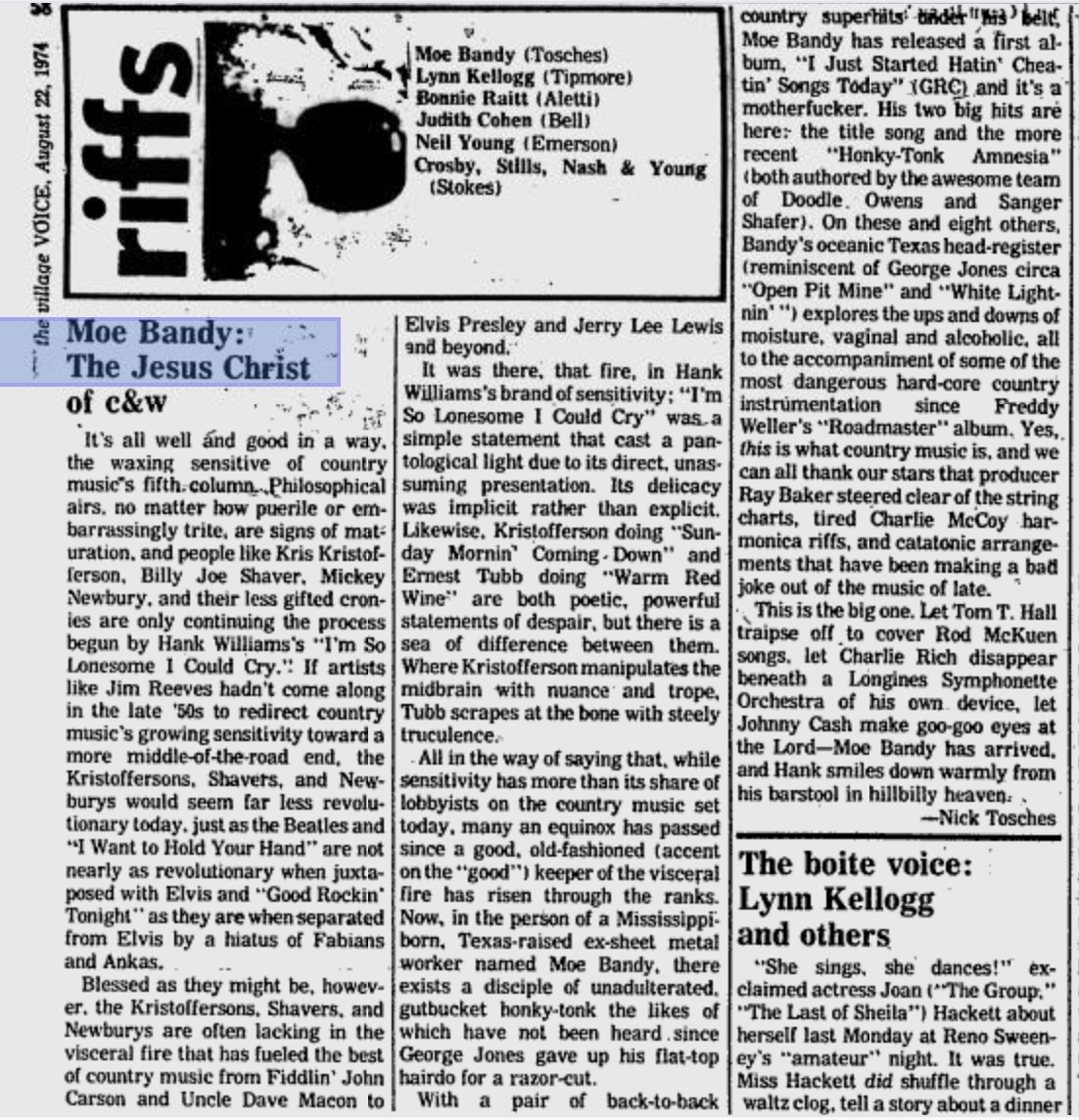
25 Years Ago: April 22, 2000
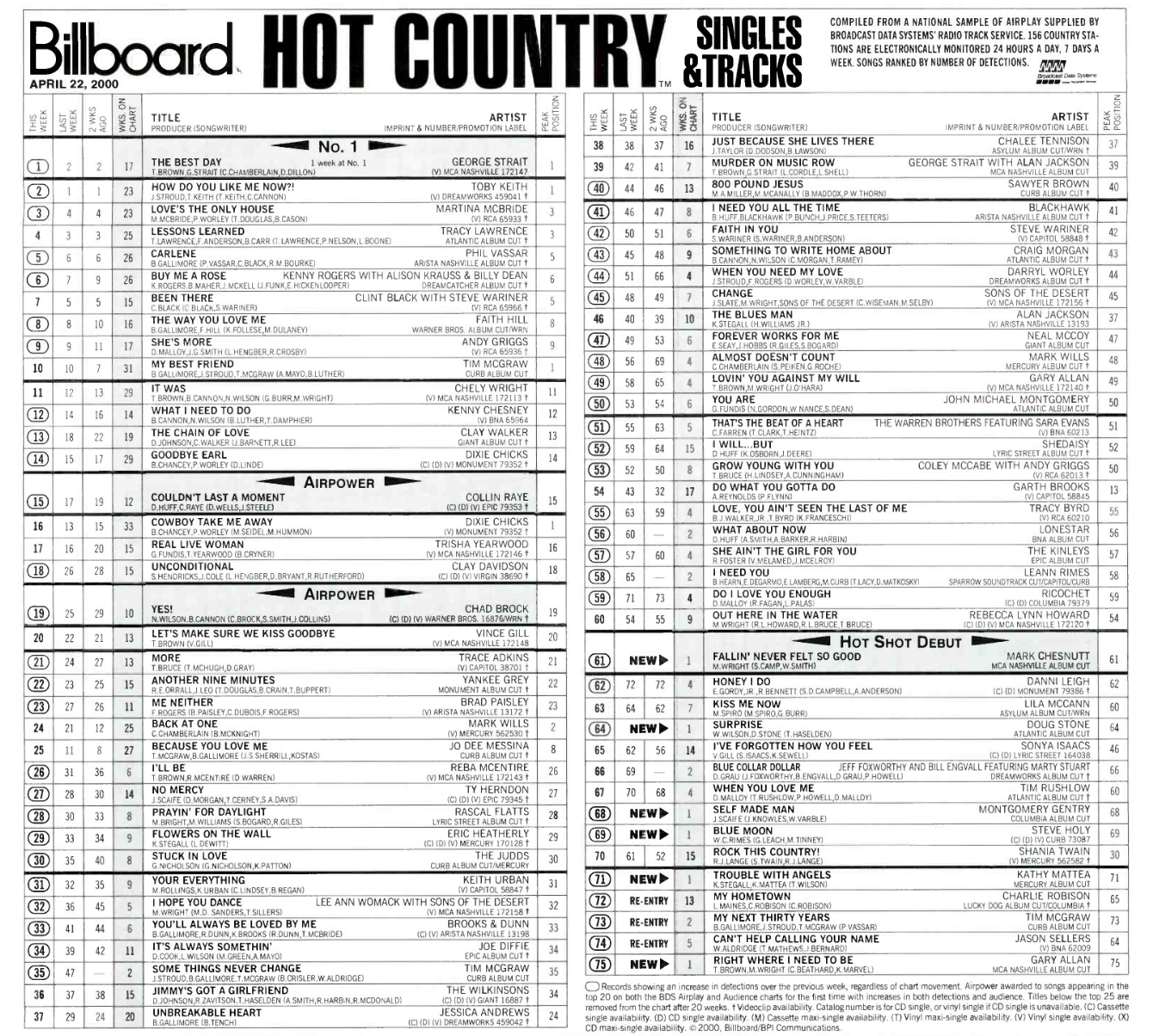
Officially in the new millennium, and was it already the beginning of the end for the ladies of the ‘90s?! Yes, Fly (bless and praise it) was in its 21st week atop the Country Albums chart, but look at this Top 10…just two solo women, one a very Sheryl and kind of weird Martina McBride “message song” (made a little more odd by the video…) and the other a Faith Hill classic, neither the boldest/riskiest country song (though I’m sure Hill’s pointed Autotune ruffled a few feathers…). We have George at his most cornball atop the chart, followed by Toby Keith with a kind of proto-Drake/Wallen song about resenting women…cool. “Goodbye Earl” sticks out like a sore thumb in this chart’s upper eschelon — like compare and contrast with the surging “I Hope You Dance.” We love Lee Ann more than most, but “Dance” is legendary in its schlock.
Looking down the chart, what else do we see but the depressing presence of “Murder on Music Row” (Who exactly “murdered” country music, George and Alan? Was it all the women who beat you on the charts over the past decade? Because it feels like that’s what you’re mad at!) and some fresh horror called “Blue Collar Dollar” by…Jeff Foxworthy with Marty Stuart (!). Marty, what the hell?
At least one timeless Texas tune can be found lingering at the bottom of this one, though: Charlie Robison’s “My Hometown” (sitting on the chart right there with the Chicks song he inspired, “Cowboy Take Me Away”). You can read more about Charlie here.
Anyway! Not to be a downer. Thanks for joining me on this meandering journey, here’s a song I have never heard of before:


